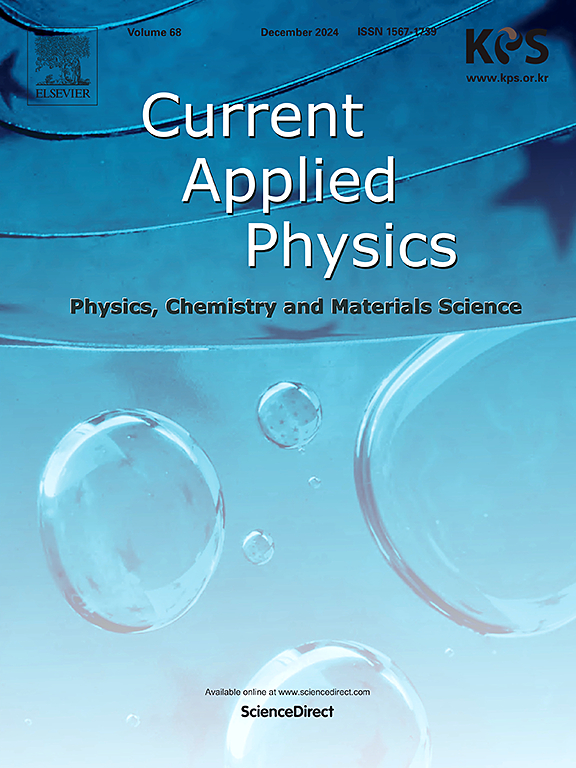Asymmetric-gate Mach–Zehnder interferometry in graphene: Multi-path conductance oscillations and visibility characteristics
IF 3.1
4区 物理与天体物理
Q3 MATERIALS SCIENCE, MULTIDISCIPLINARY
引用次数: 0
Abstract
Graphene provides an excellent platform for investigating electron quantum interference due to its outstanding coherent properties. In the quantum Hall regime, Mach–Zehnder (MZ) electronic interferometers are realized using p–n junctions in graphene, where electron interference is highly protected against decoherence. In this work, we present a phenomenological framework for graphene-based MZ interferometry with asymmetric p–n junction configurations. We show that the enclosed interferometer area can be tuned by asymmetric gate potentials, and additional MZ pathways emerge in higher-filling-factor scenarios, e.g., . The resulting complicated beat oscillations in asymmetric-gate MZ interference are efficiently analyzed using a machine-learning-based Fourier transform, which yields improved peak-to-background ratios compared to conventional signal-processing techniques. Furthermore, we examine the impact of the asymmetric gate on the interference visibility, finding that interference visibility is enhanced under symmetric gate conditions.
石墨烯中的非对称门Mach-Zehnder干涉测量:多径电导振荡和可见性特性
石墨烯由于其出色的相干特性,为研究电子量子干涉提供了一个很好的平台。在量子霍尔体系中,马赫-曾德尔(MZ)电子干涉仪是利用石墨烯中的p-n结实现的,石墨烯中的电子干扰具有高度的退相干性。在这项工作中,我们提出了一个具有不对称pn结结构的石墨烯基MZ干涉测量的现象学框架。我们表明,封闭的干涉仪区域可以通过不对称门电位进行调谐,并且在高填充因子的情况下出现额外的MZ通路,例如(νn,νp)=(−3,+3)。使用基于机器学习的傅立叶变换有效地分析了非对称门MZ干扰中产生的复杂拍振荡,与传统的信号处理技术相比,该方法产生了更好的峰背景比。此外,我们研究了非对称栅极对干扰可见性的影响,发现对称栅极条件下干扰可见性增强。
本文章由计算机程序翻译,如有差异,请以英文原文为准。
求助全文
约1分钟内获得全文
求助全文
来源期刊

Current Applied Physics
物理-材料科学:综合
CiteScore
4.80
自引率
0.00%
发文量
213
审稿时长
33 days
期刊介绍:
Current Applied Physics (Curr. Appl. Phys.) is a monthly published international journal covering all the fields of applied science investigating the physics of the advanced materials for future applications.
Other areas covered: Experimental and theoretical aspects of advanced materials and devices dealing with synthesis or structural chemistry, physical and electronic properties, photonics, engineering applications, and uniquely pertinent measurement or analytical techniques.
Current Applied Physics, published since 2001, covers physics, chemistry and materials science, including bio-materials, with their engineering aspects. It is a truly interdisciplinary journal opening a forum for scientists of all related fields, a unique point of the journal discriminating it from other worldwide and/or Pacific Rim applied physics journals.
Regular research papers, letters and review articles with contents meeting the scope of the journal will be considered for publication after peer review.
The Journal is owned by the Korean Physical Society.
 求助内容:
求助内容: 应助结果提醒方式:
应助结果提醒方式:


